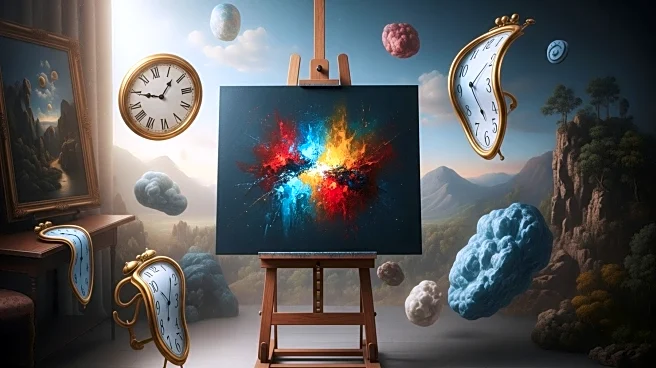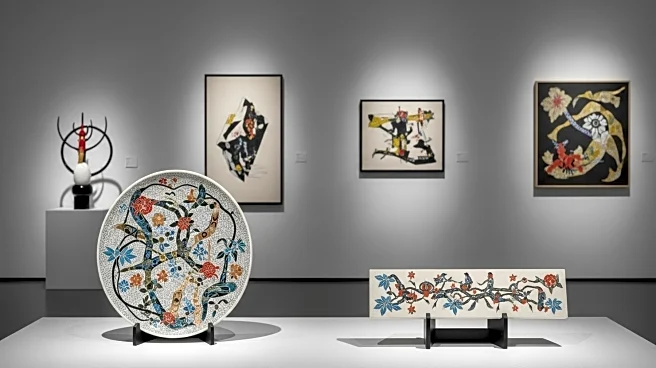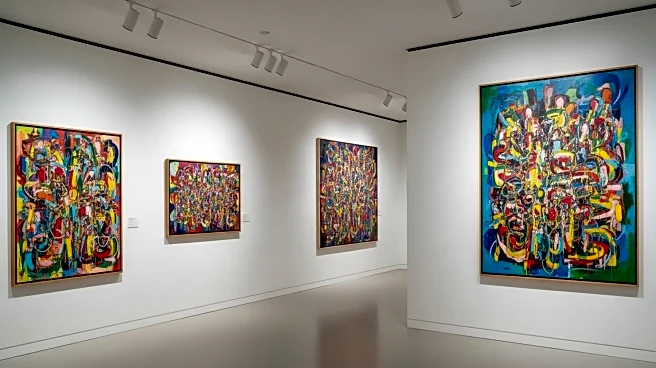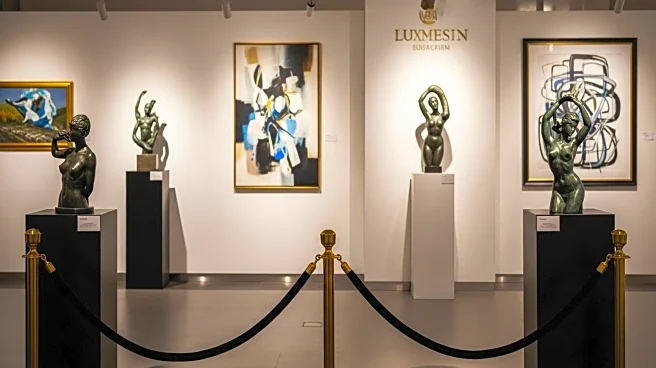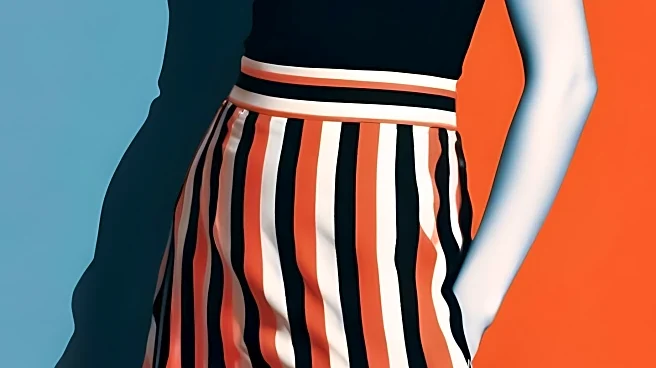What's Happening?
The art market has experienced a notable shift in sales trends during the first half of 2025, with a significant increase in the $1 million-to-$10 million price bracket. This segment saw a 13.8 percent rise in sales, totaling $1.6 billion, and a 6.7 percent increase in the number of works sold compared to the same period in 2024. This growth contrasts with a sharp decline in the very top end of the market, where sales of artworks valued over $10 million fell by 43.4 percent to $515.4 million. The number of lots sold in this high-end bracket was the lowest in a decade, with only 27 lots sold. Meanwhile, the $100,000-to-$1 million range and lower segments also saw declines, with sales dropping by 8 percent and 10.1 percent, respectively.
Why It's Important?
The growth in the $1 million-to-$10 million price bracket suggests a potential stabilization in the art market, despite overall declines. This segment's resilience may indicate a shift in collector preferences or investment strategies, as buyers focus on mid-range artworks that offer both value and potential appreciation. The contraction at the top end of the market could reflect broader economic uncertainties or a reevaluation of high-value art investments. These trends have implications for auction houses, galleries, and artists, as they may need to adjust their strategies to cater to changing market dynamics. The decline in lower price segments also challenges narratives about the strength of the entry-level market, suggesting a more complex landscape.
What's Next?
Auction houses and galleries may need to adapt their offerings and marketing strategies to align with the growing interest in the $1 million-to-$10 million bracket. This could involve curating more mid-range collections and targeting marketing efforts towards collectors interested in this segment. Additionally, the decline in high-end sales may prompt a reassessment of pricing strategies and the types of artworks offered at auction. As the market continues to evolve, stakeholders will likely monitor these trends closely to capitalize on emerging opportunities and mitigate potential risks.
Beyond the Headlines
The shifts in the art market may also reflect broader cultural and economic trends, such as changing tastes among collectors and the impact of global economic conditions on luxury spending. The decline in high-end sales could be influenced by factors such as geopolitical tensions, currency fluctuations, and changes in wealth distribution. Additionally, the art market's performance may serve as a barometer for broader economic health, with shifts in sales patterns offering insights into consumer confidence and investment behavior.


